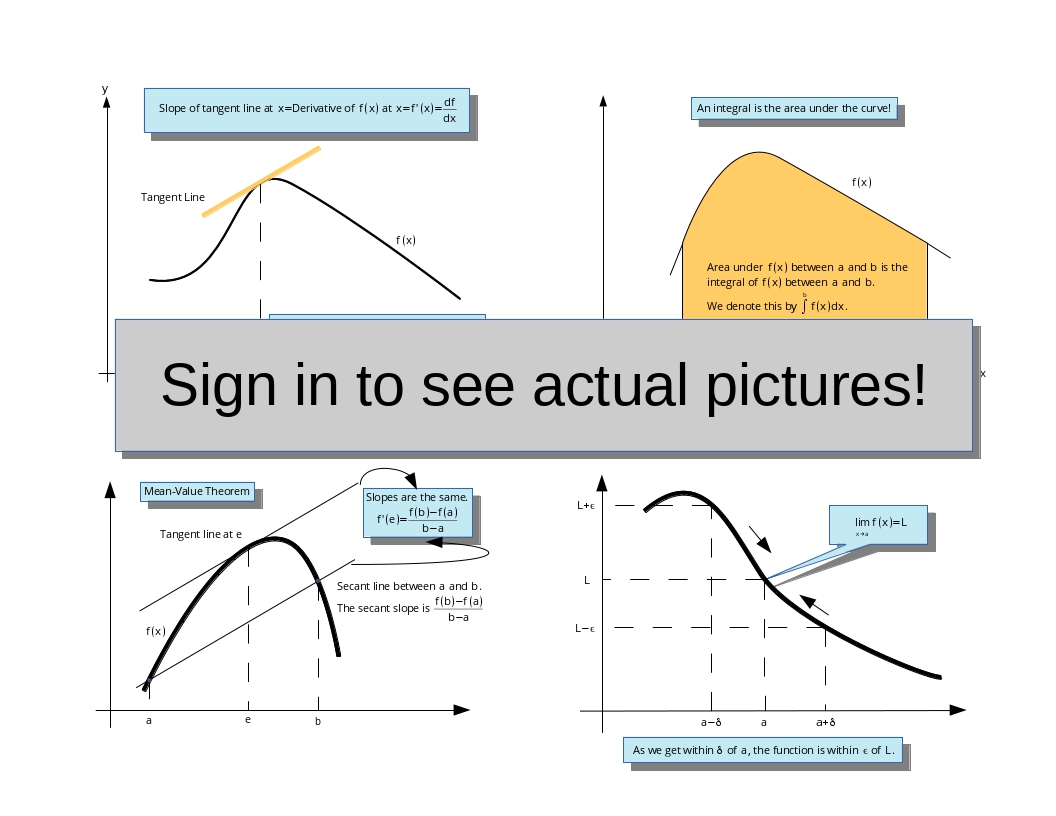Supply and Demand Functions
Primary tabs
SAMPLE LESSON
Sign in for easy to read lessons narrowly focused on a specific subject. All lessons are linked to each other allowing you to easily see the connections between different Calculus concepts. Our unique Calcmap will give you a bird's-eye view of all our lessons and help you see how important concepts are related to each other. All of the formulas are available to our subscribers, but here is a sample of the lesson you will see when you log in:
In Economics there is a natural relationship between consumers wanting a product and companies wanting to sell them a product. Both groups are sensitive to the price of the product. Consumers want the lowest price and businesses want the highest price. Consumers and businesses will agree on a price somewhere in the middle. The focus on this lesson is to discuss the demand and supply functions and how they are used to find the middle price that consumers and businesses agree upon.
Let's denote n as the number of units of a product and p as the price per unit of the product. Economist will typically label the y-axis with the price and the x-axis with the quantity.
The demand function relates the price with the amount that consumers buy. As the price increases consumers will buy less of a product and as prices decrease consumers will buy more. The figure below shows a demand functions that expresses the fact that as the price increases the "demand" from consumers will decrease. Similarly, as the price decreases the "demand" from consumers will increase. We denote the demand function by <Sign in to see all the formulas>.

The supply function relates the price with the amount that businesses produce. As the price increases the profit to businesses increases so they will produce more. Furthermore, new firms will be attracted to the high prices and enter the market to produce more. As prices decrease, the profit to businesses will decrease so they will produce less. The figure below shows a supply function that expresses the fact that businesses will produce when the price increases and will produce less when the price decreases. We denote the supply function by <Sign in to see all the formulas>.

So what is the price that both consumers and businesses agree upon? It is at the price and quantity where the supply and demand functions cross. The figure below shows that at a price p′ and a quantity n′ consumers and businesses will agree to buy and sell to each other. We refer to p′ as the equilibrium price and n′ as the equilibrium quantity.

So how do we find the equilibrium price and quantity when we are given a demand function <Sign in to see all the formulas> and a supply function <Sign in to see all the formulas>? Set <Sign in to see all the formulas> and solve for n. This is n′. Once you have n′ you can put it into either <Sign in to see all the formulas> or <Sign in to see all the formulas> to find p′.
Here are two examples:
Finally, it is important to note that the independent variable here is price and not the number of units. When we have a function f(x), we say that "f" is a function of "x" and mean that f is dependent on x. In other words, x is an independent variable and f is a dependent variable. Typically the independent variable is placed on the horizontal x-axis and the dependent variable is placed on the vertical y-axis. Unfortunately for supply and demand functions this is done differently. The English economist Alfred Marshall started the convention of plotting the independent variable (price) on the y-axis and the dependent variable (number of units) on the x-axis. This convention has held to this day and is why we wrote the supply and demand functions as <Sign in to see all the formulas> and <Sign in to see all the formulas> instead of <Sign in to see all the formulas> and <Sign in to see all the formulas> as they should have been. So always remember that it is price that drives consumer demand and producer supply and not the other way around.
